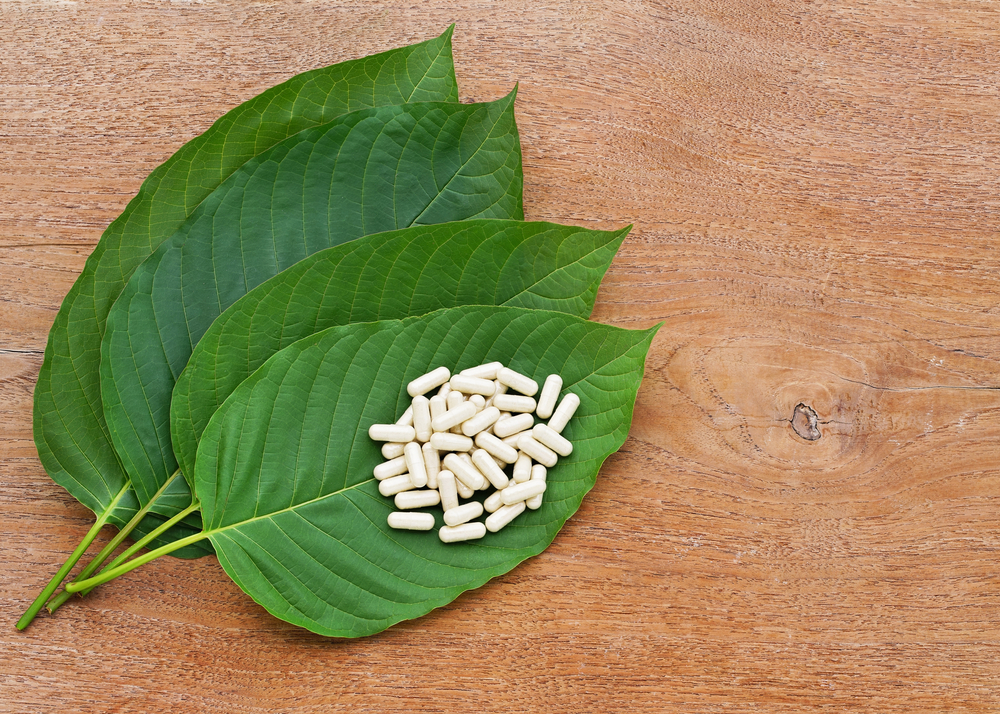What are Kratom Tolerance Symptoms?
Written by Jonathan Strum
& Medically Reviewed by Dr. Trisha Sippel, PhD
Medically Reviewed
Up to Date
Last Updated - 6/17/2022
View our editorial policy
Kratom is a relatively new drug that comes from the leaves of Mitragyna speciosa trees in Southeast Asia. The plant is in the same family as the coffee plant and has similar energy-boosting effects. However, it also mimics opioids through its pain-relieving and sedative properties. For this reason, it has been used by some to manage pain and lessen the symptoms of opioid withdrawal.
Similar to opioid tolerance, tolerance to kratom can develop over time. Tolerance makes people need to take higher doses of a drug to experience the same effects. There are ways to prevent kratom tolerance or boost the effects of kratom if tolerance occurs.
Kratom Tolerance Symptoms
A person who uses kratom multiple times or for an extended period may become tolerant to it. Tolerance occurs when a person’s body adjusts to a drug being present in their system, and the body begins to act normally despite the presence of a drug. In other words, the drug loses its effectiveness. When this happens, a person usually will take more of the drug to feel its effects again.
When kratom is used to reduce opioid withdrawal symptoms, developing a tolerance to it can harm the person’s recovery. When a person uses kratom to minimize the symptoms of opioid withdrawal and becomes tolerant to kratom, opioid withdrawal symptoms (including intense opioid cravings) can return. If this happens, the person may take more kratom or start using opioids again. Combining the two or increasing the amount taken is dangerous and could lead to an overdose, which can be deadly.
If a person gains tolerance and progressively uses kratom at higher doses, they may become dependent on kratom. When this happens, their body reaches a point where it cannot function normally without it. When they stop taking kratom, they will experience withdrawal symptoms. Some of the symptoms of kratom withdrawal include:
- Muscle aches
- Runny nose
- Being unable to sleep
- Feeling irritable
- Acting aggressively
- Sudden, uncontrolled movements
Causes of Kratom Tolerance
Similar to marijuana, there are different strains of kratom. These strains have similar effects but to different degrees, and each strain of kratom has slightly different chemicals that affect the body. Kratom tolerance usually occurs when someone uses the same strain for an extended period of time and the body is continuously exposed to the same chemicals. This is called stagnant strain syndrome. By switching strains and introducing different chemicals to the body, the chance of tolerance lowers.
Kratom tolerance can also be caused by:
- Dosage: Taking the same dose of kratom repeatedly can cause tolerance. If a person progressively increases the amount of kratom to feel the effects again, this can increase tolerance.
- Frequency of use: Using kratom frequently can cause tolerance. The more frequent it is used, the more likely a person will become tolerant to it.
- Duration of use: The longer a person uses kratom, the more likely they are to become tolerant to it.
- Interactions with other drugs: There are several drugs or herbs that may interact with kratom, though more research is needed on this topic. However, there have been several overdose cases reported where kratom was mixed with other substances.
- Other factors: A person’s reaction to any kind of drug will be different depending on the person’s characteristics. Things like age, weight, body fat content, gender, race and overall health can influence how a person metabolizes a drug and how long it stays in their system. This can also influence a person’s tolerance.
Kratom Potentiation
When someone becomes tolerant to kratom and starts using more of it, they are at an increased risk of becoming addicted to or dependent on kratom. If a person is becoming tolerant of kratom, there may be ways to make its effects more potent without increasing the dose. Making kratom more potent is called potentiation.
People who use the drug claim that kratom can be potentiated by combining kratom and magnesium or using turmeric along with kratom. Potentiating kratom with turmeric may make the effects last longer. Magnesium has dangerous effects when too much is taken, so people who use magnesium to potentiate kratom should do so with caution. These methods have not been scientifically or medically proven to work.
How to Prevent Kratom Tolerance
Since tolerance is caused by using too much kratom too often, the best way to stop kratom tolerance is to take a break from using the drug. As a general rule, kratom should not be used more than twice a week, uses should be spaced at least three days apart and it should not be used for two days in a row. Some tips to prevent kratom tolerance are:
- Develop a schedule for taking kratom and stick to it; do not use it more often or increase the dose
- Rotate the strain of kratom that you are using
- Keep a record of the kratom use, including strain, dose, date, time and the effects felt (including any side effects)
- Avoid using formulations of kratom that have high concentrations
Getting Help With Kratom Addiction
When used too often or in high amounts, kratom has the potential to be addictive. Acquiring a tolerance to kratom is a sign of addiction. If you or a loved one uses kratom chronically and has developed a tolerance to or dependence on kratom, there are options for treating it.
Kratom addiction treatment usually involves detoxing from kratom, done by stopping its use and allowing the chemicals to fully leave the body. This is followed by therapy to help address the underlying causes of the addiction and keep the person on the path to recovery. One effective type of therapy used for kratom addiction is cognitive behavioral therapy. In this therapy, a person learns how their emotions and thoughts influence their behavior, including substance use.
Additionally, contingency management is a form of positive reinforcement that can be helpful in kratom addiction treatment. This is a type of behavioral conditioning where individuals are rewarded for good behaviors like abstaining from substance use.
If you are ready to start your recovery, Contact The Recovery Village Ridgefield to speak with a representative and learn about treatment options that can work well for you.
Sources
Reys, Lyndon. “How to Avoid Kratom Tolerance and Stagnant Strain Syndrome.” Kratom Online, 2013. Accessed October 11, 2019.
Veltri, Charles; Grundmann, Oliver. “Current perspectives on the impact of Kratom use.” Substance Abuse and Rehabilitation, July 1, 2019. Accessed September 26, 2019.
Kratom News. “Kratom Tolerance: How It Develops and How To Avoid It.” Kratom News, December 24, 2018. Accessed October 11, 2019.
National Institute on Drug Abuse. “Kratom.” April 2019. Accessed September 26, 2019.
Drug Enforcement Administration. “KRATOM (Mitragyna speciosa korth).” January 2013. Accessed September 26, 2019.
View Sources
Reys, Lyndon. “How to Avoid Kratom Tolerance and Stagnant Strain Syndrome.” Kratom Online, 2013. Accessed October 11, 2019.
Veltri, Charles; Grundmann, Oliver. “Current perspectives on the impact of Kratom use.” Substance Abuse and Rehabilitation, July 1, 2019. Accessed September 26, 2019.
Kratom News. “Kratom Tolerance: How It Develops and How To Avoid It.” Kratom News, December 24, 2018. Accessed October 11, 2019.
National Institute on Drug Abuse. “Kratom.” April 2019. Accessed September 26, 2019.
Drug Enforcement Administration. “KRATOM (Mitragyna speciosa korth).” January 2013. Accessed September 26, 2019.
Authorship






